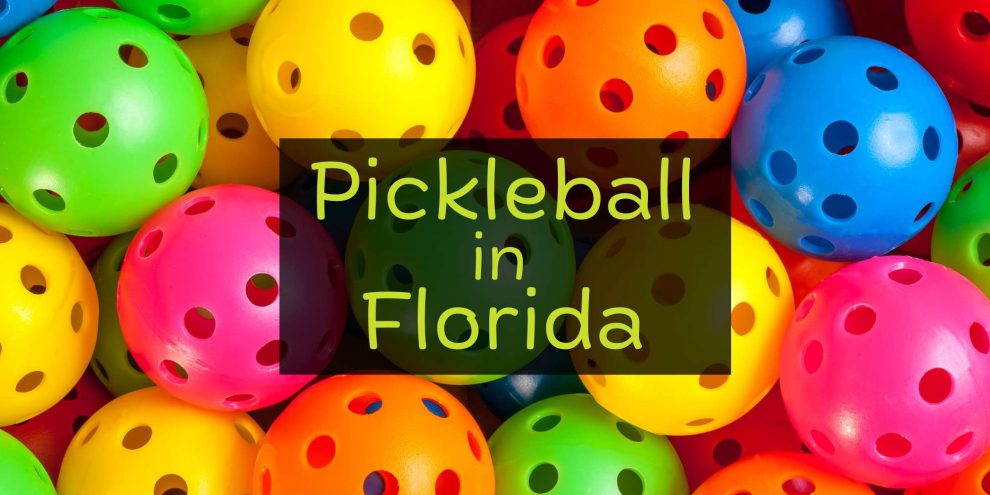Pickleball, a sport that combines elements of tennis, badminton, and ping-pong, is rapidly gaining traction across Florida. Known for its accessibility and social nature, it has become a favorite pastime for residents and visitors alike. With year-round warm weather and a growing number of courts and clubs, Florida is an ideal destination for pickleball enthusiasts. Here’s everything you need to know about the sport in the Sunshine State.
Why Play Pickleball?
Pickleball’s appeal lies in its simplicity and inclusiveness. Played on a smaller court with a paddle and a perforated plastic ball, it’s easy for beginners to pick up while offering plenty of challenge for seasoned players. The game is low-impact, making it suitable for all ages, and provides an excellent workout that improves agility, balance, and cardiovascular health. Plus, it’s a highly social activity, bringing a sense of community among players.
Where to Play Pickleball in Florida
Check out our Regional Pickleball Guides
Statewide Pickleball Groups and Organizations in Florida
Joining a pickleball club or group is one of the best ways to dive into the sport. Some key organizations include:
- Florida Pickleball Association (FPA): The FPA promotes pickleball statewide, offering resources for players and organizing tournaments.
- Local Meetups: Websites like Meetup.com and Facebook host pickleball groups across cities, where players can find casual games and network with others.
- USA Pickleball: This national organization lists events, certified instructors, and approved venues in Florida.
How to Start Playing Pickleball
Getting started is simple, thanks to the sport’s minimal equipment and inclusive nature.
First, Familiarize yourself with the rules and learn the basics, check out Pickleball Rules & How to Play.
Next, purchase a paddle and some pickleballs, both of which are affordable and available at sporting goods stores.
Then you can visit a local court and practice your serve, volleys, and dinks (a controlled shot that lands softly in the opponent’s kitchen area), or find a group or club that offers open play where newcomers are welcome to join.
Events and Tournaments
If you get good at the game and want to be more competitive, Florida hosts numerous pickleball tournaments throughout the year, attracting players from around the globe.
- US Open Pickleball Championships (Naples): A premier event featuring players of all levels.
- Florida State Championships: Held annually, this event showcases top talent in the state.
- Local Leagues: Many cities, such as Tampa and Fort Lauderdale, have seasonal leagues for recreational and competitive players.
Pickleball is more than just a sport in Florida; it’s a community that welcomes players of all ages and skill levels. Whether you’re a seasoned competitor or a curious beginner, the Sunshine State offers endless opportunities to enjoy this dynamic and social game. From world-class facilities to vibrant clubs, Florida is undoubtedly a pickleball paradise. So grab your paddle, hit the court, and experience the fun for yourself!
History of Pickleball
Pickleball originated in the summer of 1965 on Bainbridge Island, Washington, thanks to three dads, Joel Pritchard, a congressman, Bill Bell, a businessman, and Barney McCallum, who wanted to create a game that the whole family could enjoy together. The sport’s creation was somewhat improvised, born out of a desire to entertain their children who were bored during summer vacation.
The Origins of the Game
The game was first played on a badminton court at Pritchard’s home. They used a perforated plastic ball, similar to a Wiffle ball, and the first rackets were badminton rackets, but quickly evolved to wooden paddles, allowing for better control with the plastic ball. They lowered the badminton net to 36 inches at the center to accommodate the different style of play.
Name of the Game:
The origin of the name “pickleball” has two popular theories:
- According to Joan Pritchard, Joel’s wife, the name was inspired by a “pickle boat” in rowing, a boat made up of leftover rowers from other teams, since pickleball was created by borrowing elements of other sports like tennis, badminton, and ping-pong.
- Another story suggests the game was named after the Pritchard family dog, Pickles, who would chase the ball during play. However, this is often disputed as Pickles the dog reportedly came along later.
Growth and Popularity:
By the late 1960s, the founders formalized the rules, and the sport began to spread as friends and neighbors adopted the game. In 1972, Barney McCallum established the first pickleball company, Pickle-Ball Inc., to manufacture paddles and balls, helping standardize equipment.
From Backyard Game to Global Phenomenon
Pickleball has existed since the 1960s, but its recent surge in popularity over the past decade can be attributed to several factors, including its accessibility, social appeal, media exposure, and efforts by organizations to promote the sport. Here’s why pickleball has become a trending phenomenon:
Accessibility for All Ages and Skill Levels
- Easy to Learn: The game’s simple rules and smaller court size make it easy for beginners to pick up. Players can quickly feel confident in their abilities, which encourages participation.
- Low Physical Impact: Pickleball is less physically demanding than sports like tennis, making it ideal for older adults or those with limited mobility. However, it’s still fast-paced and strategic enough to appeal to younger athletes.
- Affordable Equipment: A paddle and a few balls are relatively inexpensive compared to other sports, making it accessible for a wide audience.
Community and Social Interaction
- Inclusive and Social: Pickleball is often played in doubles, promoting camaraderie and connection among players. This community aspect has drawn in people looking for a fun and social activity.
- Cross-Generational Appeal: Families can play together, bridging the gap between younger and older generations. Many retirees introduced the game to their children and grandchildren, fueling its popularity.
Growing Infrastructure
- Increased Courts and Facilities: Cities, parks, and recreation centers across the U.S., particularly in Florida, Arizona, and California, have built dedicated pickleball courts in response to demand.
- Expansion into Schools and Clubs: Schools have incorporated pickleball into physical education programs, and country clubs are adding courts to attract members.
Media and Celebrity Influence
- Media Exposure: Social media platforms like TikTok and Instagram have helped introduce pickleball to younger audiences, with videos of games and tutorials going viral.
- Celebrity Endorsements: High-profile figures like Tom Brady, LeBron James, and Kim Kardashian have embraced the sport, further fueling its popularity.
- TV and Streaming: Coverage of major pickleball tournaments, including the U.S. Open Pickleball Championships, has brought the sport to a broader audience.
The Pandemic Effect
- Outdoor and Socially Distanced Activity: During the COVID-19 pandemic, people sought safe, outdoor activities. Pickleball, with its smaller court size and doubles format, was perfect for maintaining social distancing while staying active.
- Time for New Hobbies: The pandemic gave many people the opportunity to explore new activities, and pickleball fit the bill as an easy-to-learn, family-friendly option.
Competitive and Professional Growth
- Professional Leagues: The creation of professional organizations like the Professional Pickleball Association (PPA) and Major League Pickleball (MLP) has elevated the sport’s profile. These leagues host tournaments with prize money and attract top athletes, adding legitimacy and excitement.
- Tournaments and Events: High-profile events such as the U.S. Open Pickleball Championships and the Nationals have drawn attention to the sport’s competitive side.
Health and Fitness Benefits
- Full-Body Workout: Pickleball offers a mix of cardio, strength, and agility training, appealing to those seeking a fun yet effective way to stay active.
- Mental Health Boost: The social and recreational aspects of the game provide stress relief and foster a sense of community, which became especially important during the pandemic.
Demographic Shifts
- Aging Population: As the baby boomer generation ages, they have embraced pickleball as a low-impact sport that keeps them active and social.
- Younger Players Joining: While pickleball initially gained traction among older adults, younger players and competitive athletes have joined, diversifying the player base and driving innovation in play styles and equipment.
The combination of accessibility, social interaction, professional growth, and media exposure has propelled pickleball from a niche activity to a mainstream phenomenon. Its inclusiveness and adaptability make it a sport that truly caters to everyone, ensuring its momentum will only continue to grow in the years ahead.











